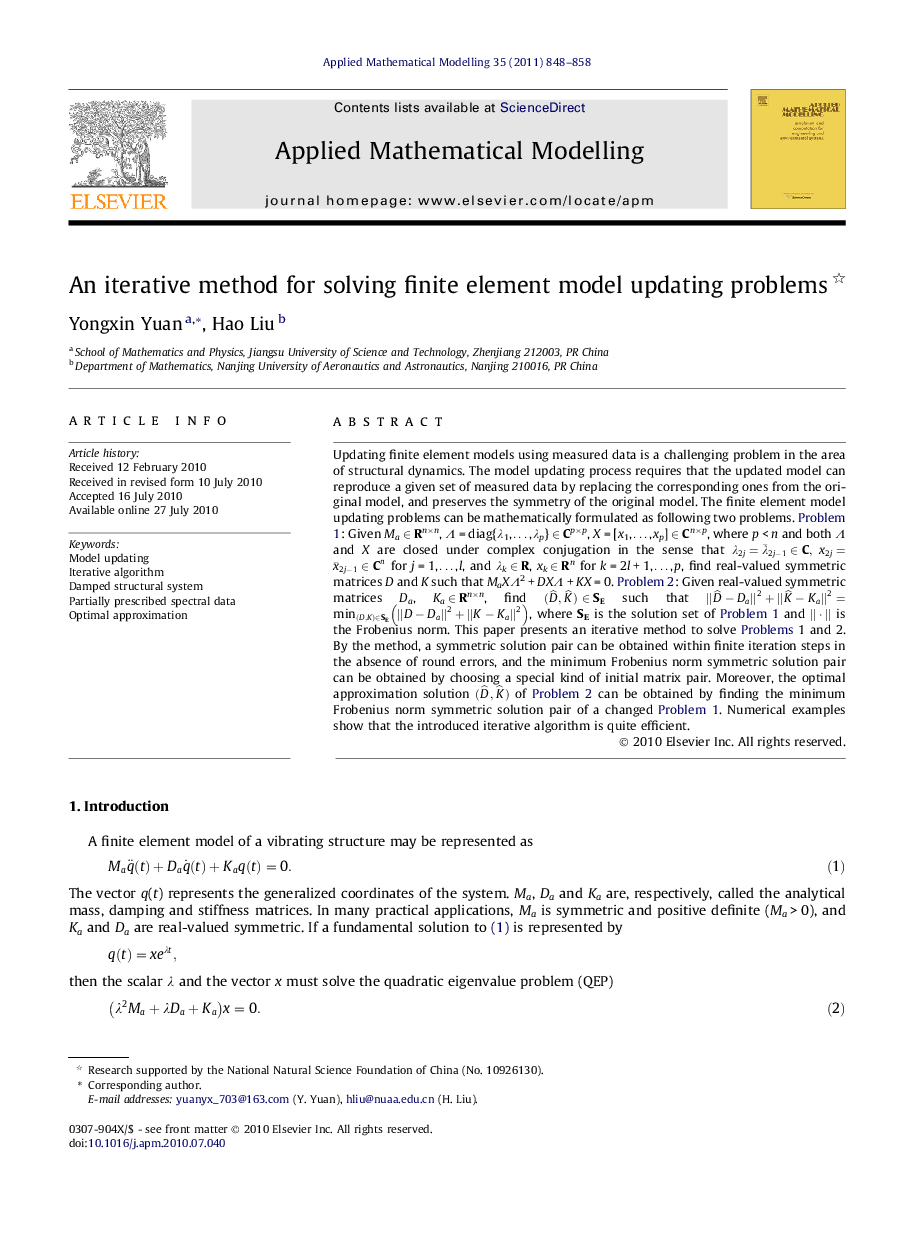| Article ID | Journal | Published Year | Pages | File Type |
|---|---|---|---|---|
| 1706216 | Applied Mathematical Modelling | 2011 | 11 Pages |
Updating finite element models using measured data is a challenging problem in the area of structural dynamics. The model updating process requires that the updated model can reproduce a given set of measured data by replacing the corresponding ones from the original model, and preserves the symmetry of the original model. The finite element model updating problems can be mathematically formulated as following two problems. Problem 1: Given Ma ∈ Rn×n, Λ = diag{λ1, … , λp} ∈ Cp×p, X = [x1, … , xp] ∈ Cn×p, where p < n and both Λ and X are closed under complex conjugation in the sense that λ2j=λ¯2j-1∈C,x2j=x¯2j-1∈Cn for j = 1, … , l, and λk ∈ R, xk ∈ Rn for k = 2l + 1, … , p, find real-valued symmetric matrices D and K such that MaXΛ2 + DXΛ + KX = 0. Problem 2: Given real-valued symmetric matrices Da, Ka ∈ Rn×n, find (D^,K^)∈SE such that ‖D^-Da‖2+‖K^-Ka‖2=min(D,K)∈SE‖D-Da‖2+‖K-Ka‖2, where SE is the solution set of Problem 1 and ∥ · ∥ is the Frobenius norm. This paper presents an iterative method to solve Problem 1 and Problem 2. By the method, a symmetric solution pair can be obtained within finite iteration steps in the absence of round errors, and the minimum Frobenius norm symmetric solution pair can be obtained by choosing a special kind of initial matrix pair. Moreover, the optimal approximation solution (D^,K^) of Problem 2 can be obtained by finding the minimum Frobenius norm symmetric solution pair of a changed Problem 1. Numerical examples show that the introduced iterative algorithm is quite efficient.
